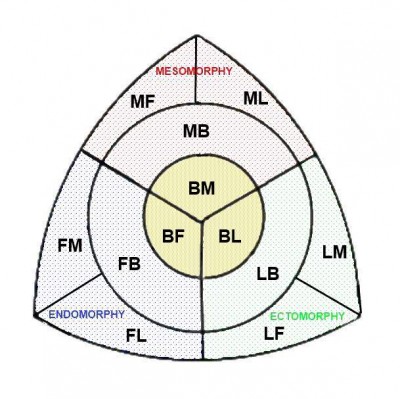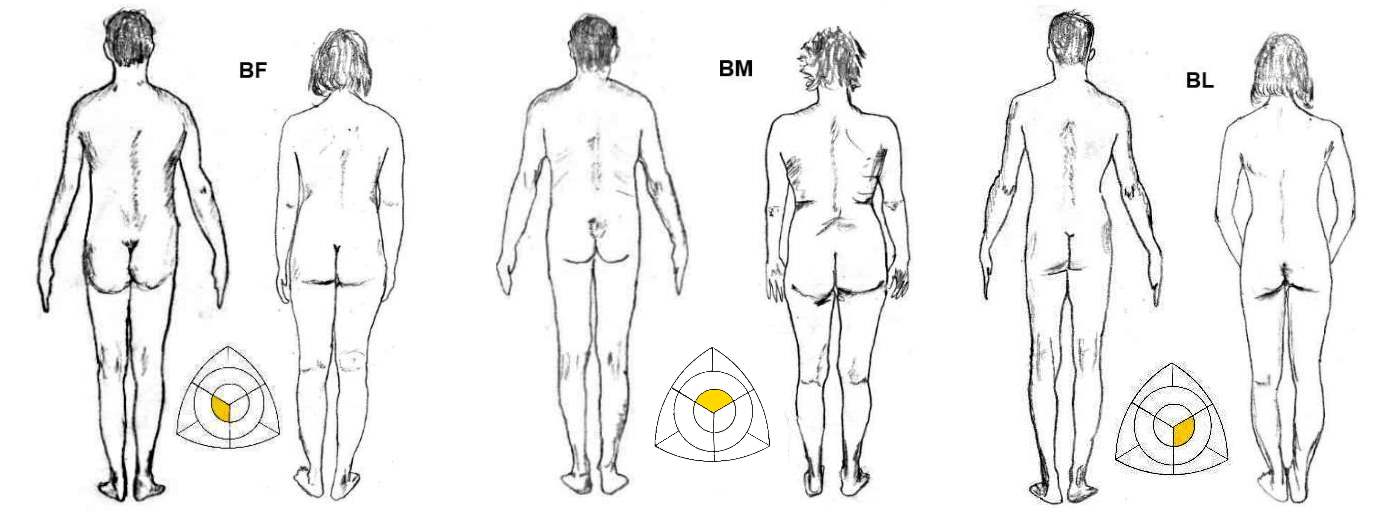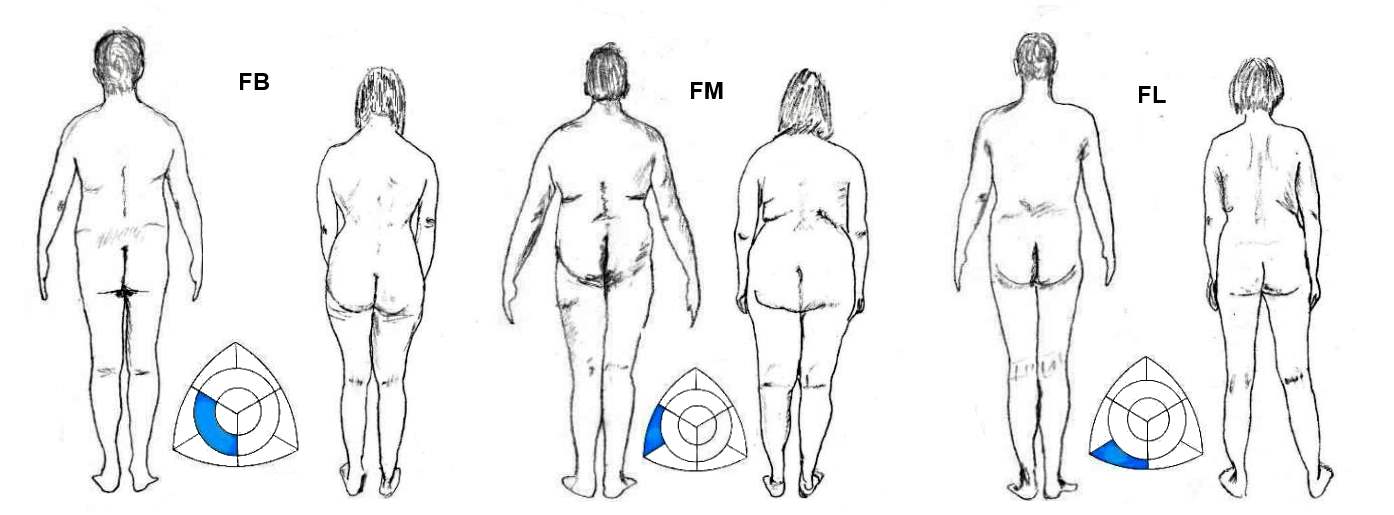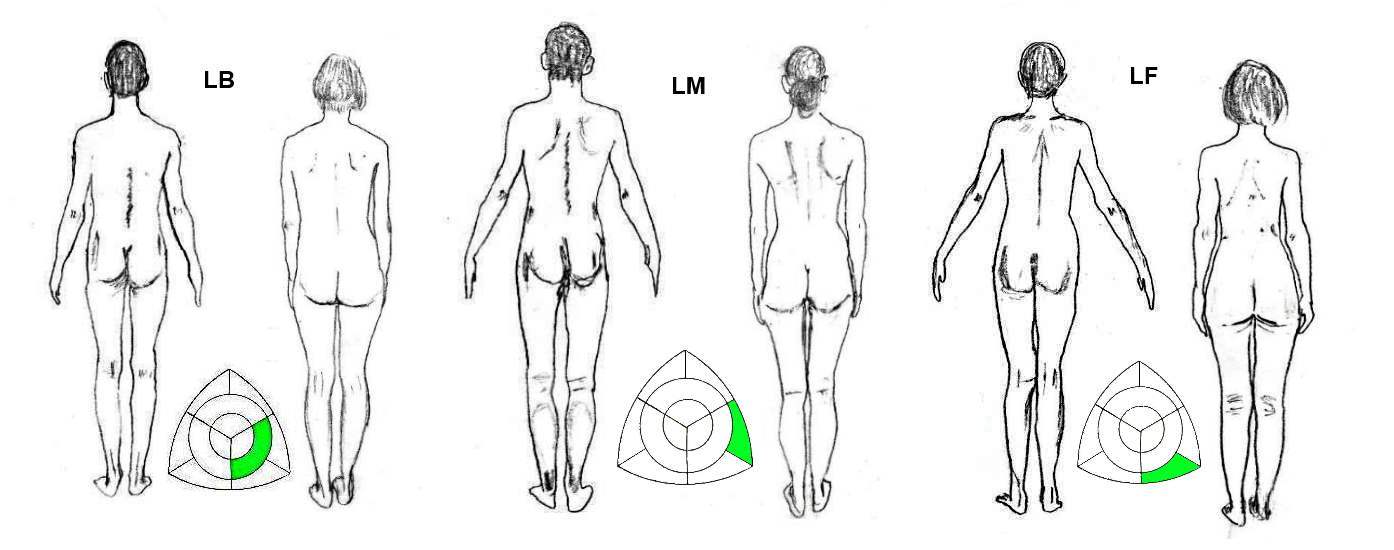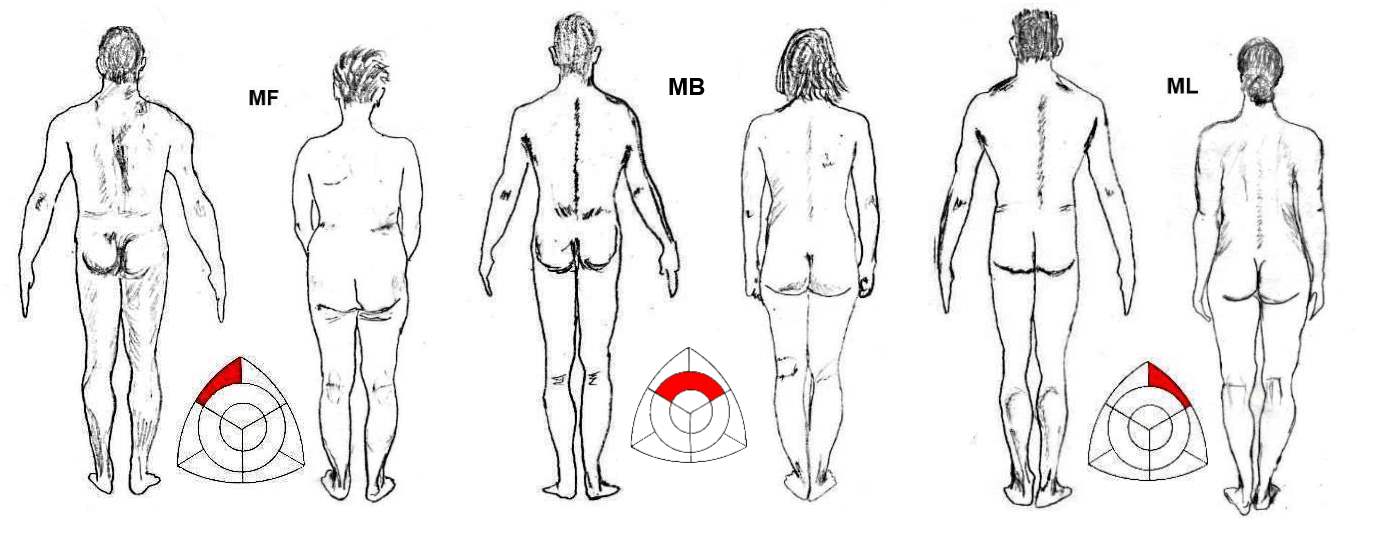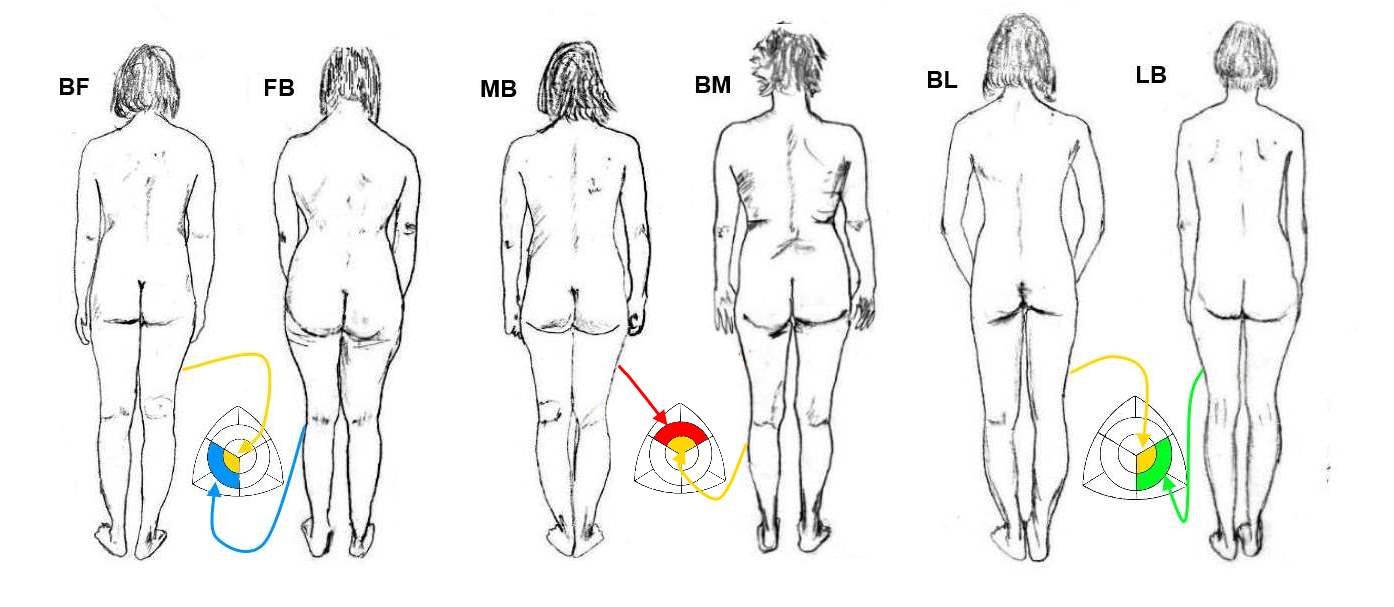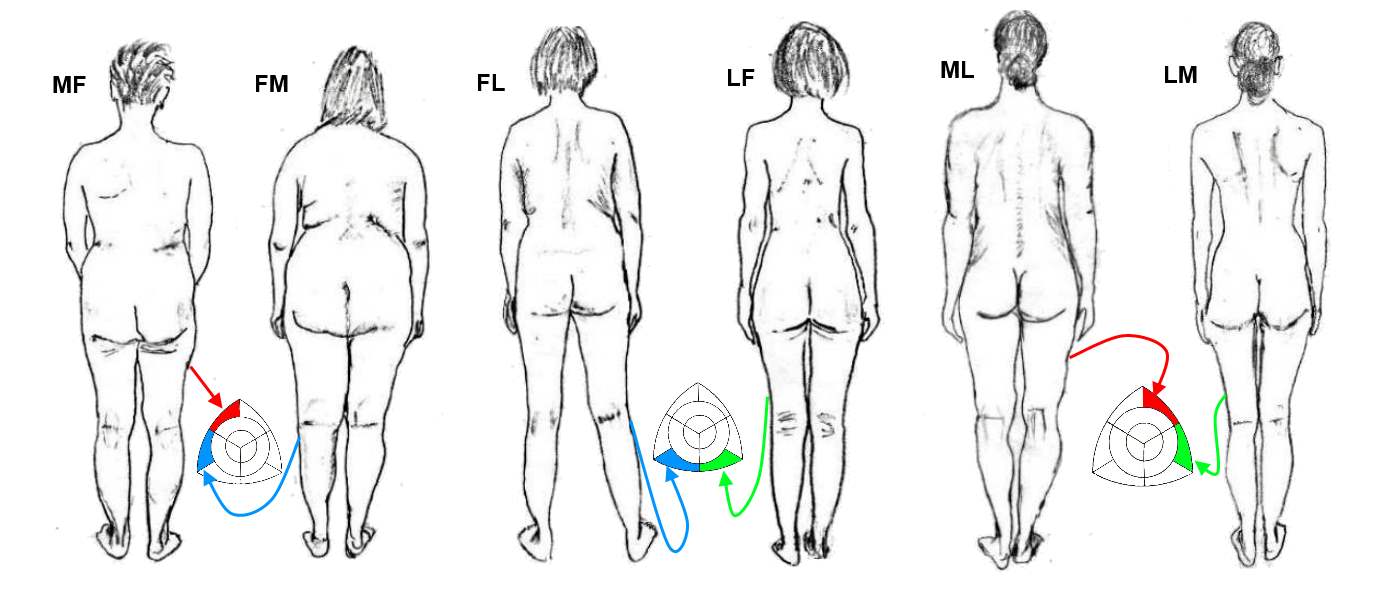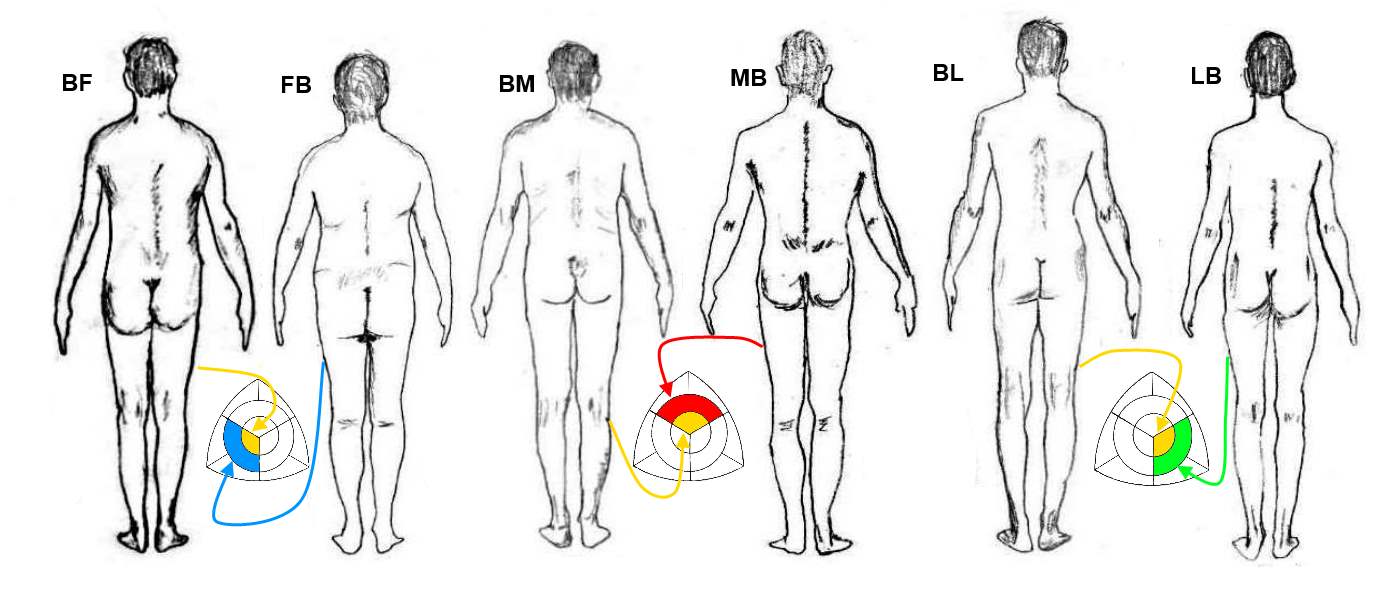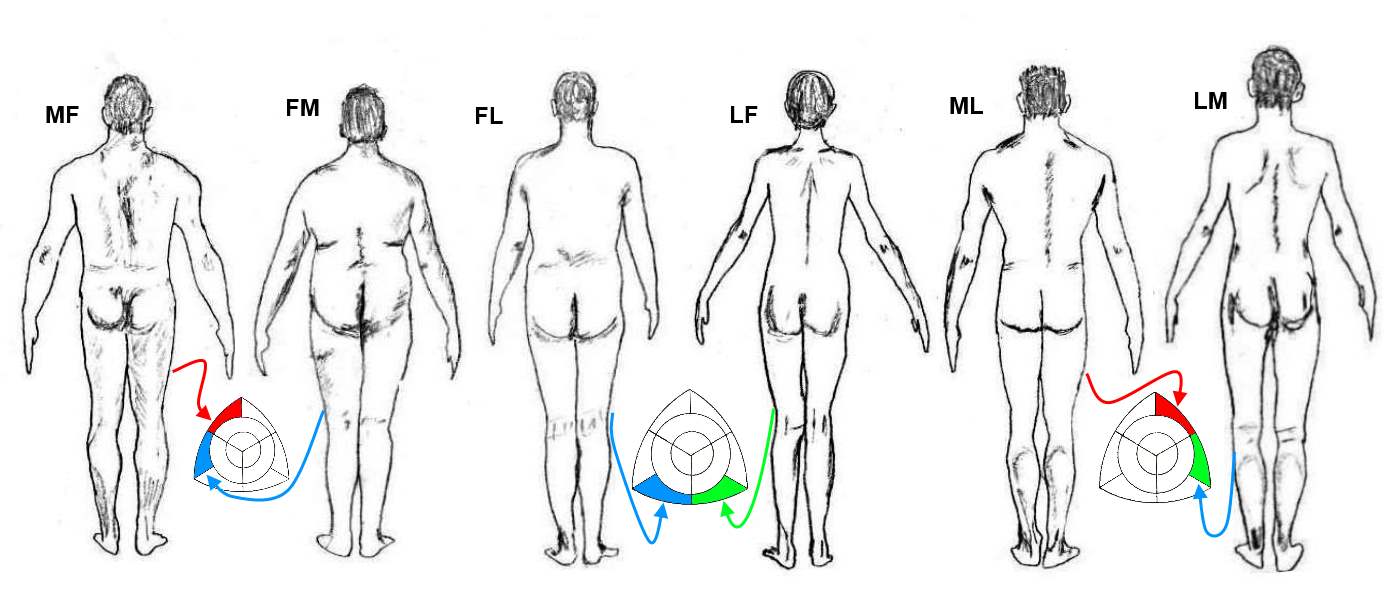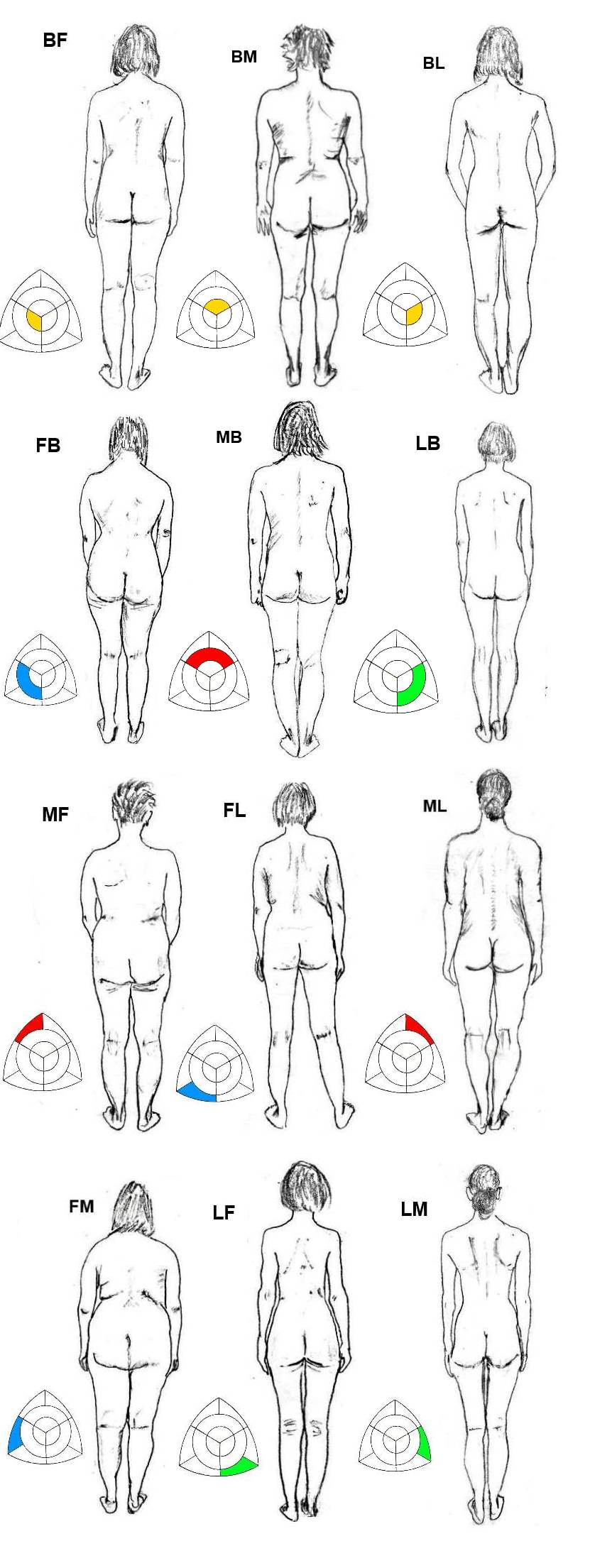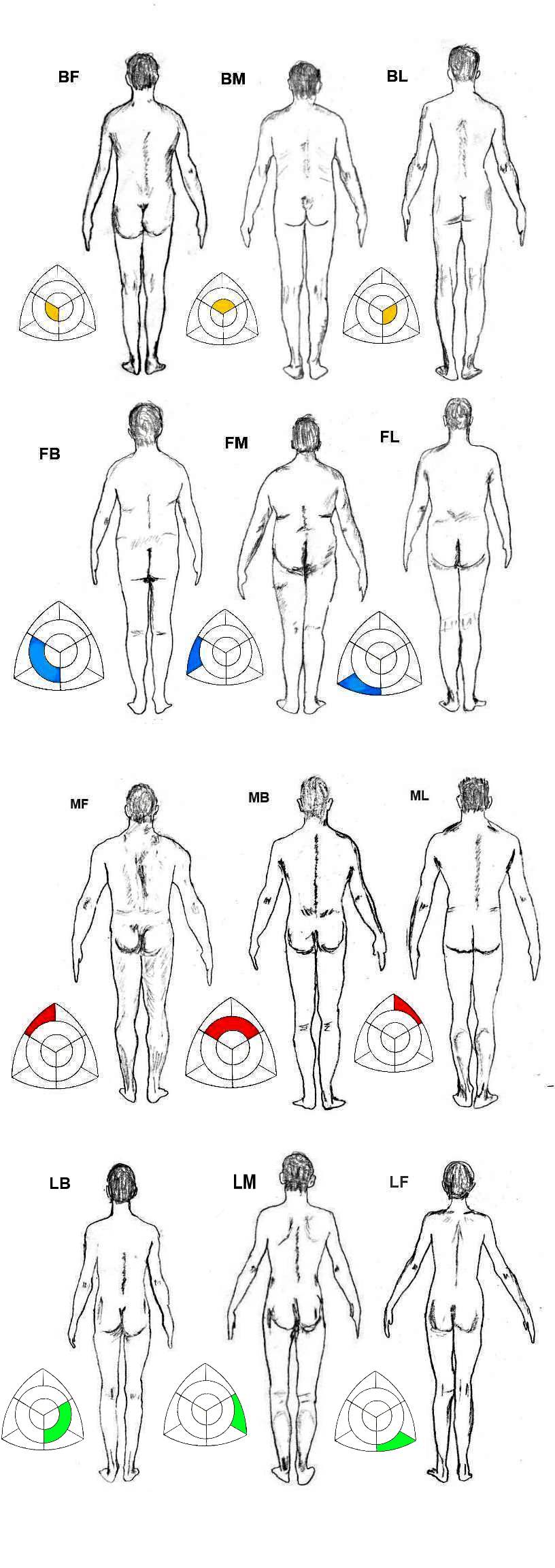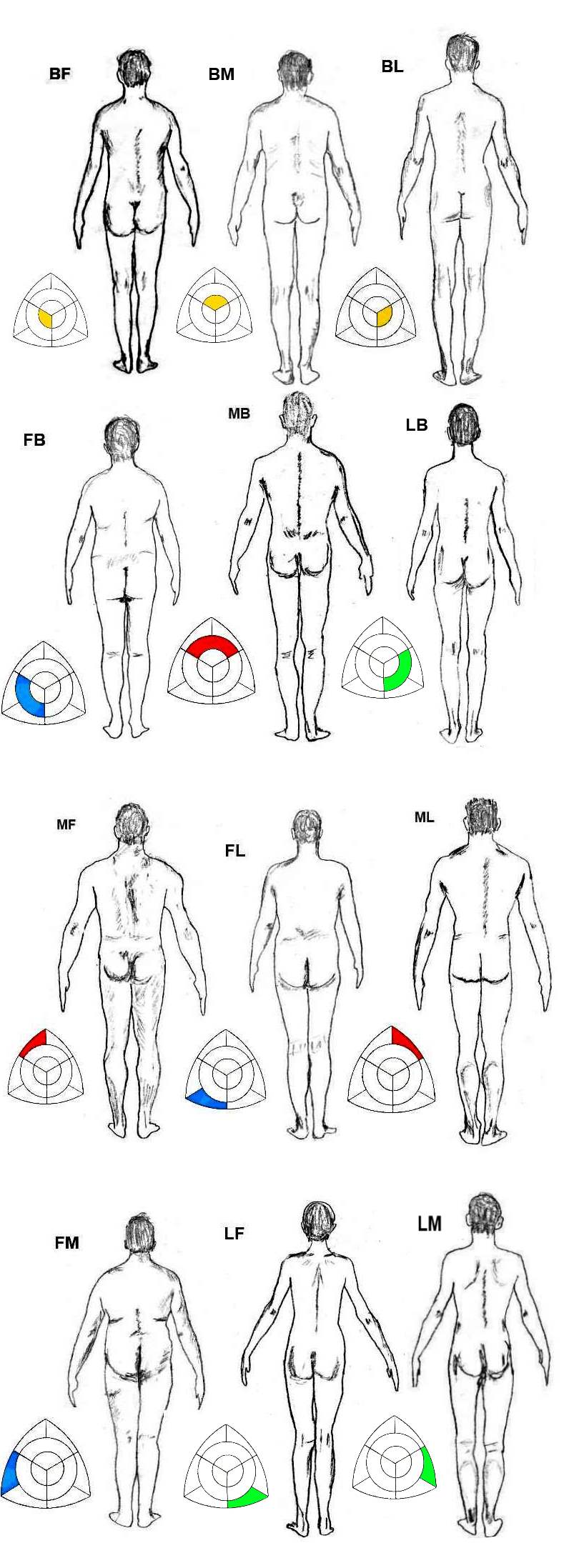SOMATOTYPE MADE EASY
Millions of people watch cooking shows; they buy the cook books; they purchase the best cooking utensils, but then they never actually step into the kitchen and cook something. Don’t let theory stand in the way of the practical benefits of knowing your somatotype. There is plenty of theory on this site and you can spend a lot of time weighing the pros and cons. I have written about the challenges to somatotype and I continue to post stuff in defense of Sheldon’s basic theory. But now I want you to try it for yourself. You will find a detailed description of Sheldon’s final objective method HERE . The instructions for finding your somatotype aren’t very complicated but most people aren’t usually curious enough to overcome their inertia and actually try it. It’s like the directions that come with assembling something from a box. There is a tendency to ignore the sheet with assembly instructions and parts list. After all, you have an idea of what a back yard grill is supposed to look like. If you want to just get a general sense of somatotype then this page of Mysomatotype.com is an easier way to take action and get acquainted with its possibilities.
Now. I want to warn you about something. You probably have your pet personality type theory and you’ve taken a test that has you believing you are a certain type. There is at least an 80% chance that the type you identify with is the result of having adapted to various traumas – big and little. The result is that your true core personality (temperament) has been encased in many layers of adaptation. That’s why people are so messed up and need coaching or psychotherapy. Once you understand the relationship between your temperament and your somatotype you will be able to discover who you are. Isn’t that worth doing the experiment? It doesn’t cost you anything. The payoff is that from the time that you understand the causal relation between your body structure and your temperament you will become so preoccupied with readjusting your life’s goals that those extra layers of adaptation will start to fall away. You will know where you want to go in life because you will finally be oriented and understand where you are. This is not to suggest that the road to recovering your core self is without conflict. As Fritz Perls says in his personal note in Gestalt Therapy Verbatim: “To suffer one’s death and to be reborn is not easy”.
OK! That’s getting too theoretical (and a little preachy) but I want you to think about the
possibilities. After you find your body type you can always go back to the theory. Here is a general outline of how you can proceed.
- Learn the basic triangle diagram of somatotypes.
- Visualize how the triangle can be sectioned.
- Learn how body-types look in the various sections.
- Map the popular personality theories over the body-type triangle.
THE SOMATOTYPE CHART – WHY A TRIANGLE?
Since there are three dimensions of physique Sheldon appropriately chose to represent the relationship between these dimensions as a triangle. Actually it would be more accurate to locate a somatotype as a point in a three dimensional space resembling a tetrahedron. Sheldon chose the triangle because it is easier for most people to visualize.
The purpose of a graphical structure is to create anchoring positions to define the relationships of elements of a system. An important factor in anchoring a system is to include the balance point or middle. The middle is the location where all the elements represented by the extremes come into their closest proximity to each other creating the possibility of novel combinations. The middle is like the town square or “down-town’. A community forms around the center. Neighborhoods may be far flung and separated but they come together at the center. It is at the center where compromise is facilitated. The center is referred to by the Gestalt psychologists as the point of “creative indifference”. It is the location furthest from the demands of the extremes.
Having identified four primary anchoring points we can now proceed to look at the triangle as it defines the possibility for understanding personality beyond the 3 somatotype descriptions. The possible combinations of 4 dimensions provides for 24 ways to arrange the stack by their order of rank. (4 x 3 x 2 x 1)
Four elements don’t generate an unwieldy set of combinations. In fact, most of the personality tests involve arranging a “stack” of 4 or five dimensions. If you know the dominant trait you’re halfway to your goal of understanding a person. If you also know the secondary trait you probably will have acquired most of what you want to know about an individual. Initially that should be your goal. If you only determine the top two dimensions that will give you 12 possibilities. The following chart shows how the somatotype triangle can be divided into 12 sections.
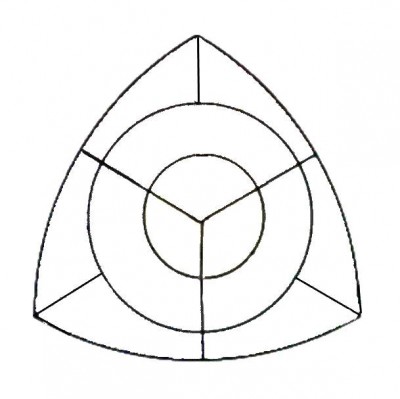
The chart above is divided into 3 major sections which in turn are sectioned into 4 subsections producing the basic 12 areas.
ASSIGNING BODY TYPES TO APPROPRIATE AREAS OF THE TRIANGLE
I want to move away from the scientific terms for the three dimensions. At this level I want to keep things as simple as possible. The use of complex scientific terms is a little awkward and abstract and requires mental gymnastics to translate. Instead I will be using terms that are in common usage when we speak about people’s body shapes. (CREDIT NOTE This labeling method was originated by the somatotype researcher and contemporary of Sheldon’s -Richard W. Parnell )
Endomorphy will be identified by the letter “F” for FAT or if that is offensive it could also stand for “FULL BODIED”. It’s unfortunate that fat, which is essential for life, has negative connotations and its use as a descriptor makes people wince. In reality endomorphy doesn’t mean “fat” but rather a morphology in which the gut dominates and which in turn can easily result in an accumulation of fat. At the same time FAT is an important marker for endomorphy and it can’t be ignored when somatotyping.
Mesomorphy will be identified by the letter “M” which also refers to muscle. To describe someone as muscular is generally considered a compliment. Similar to endomorphy’s relation to fat, mesomorphy doesn’t mean “muscle” but rather a metabolism that easily builds up muscle.
Ectomorphy will be identified by the letter “L” which refers to linear. Notice we are not using the word skinny. Linear emphasizes length over width. You take away muscle and fat and you are left with skin and bones.
Finally, the middle area will be identified by the letter “B” for balance. The outstanding identifier of this dimension is that none of the other identifiers is strong enough to appear dominant. That’s the clue that “balance” is the dominant factor in some physiques. If your initial reaction is that a person’s shape is average or a generic human shape you have a good example of the balanced type.
This is how the 12 section triangle maps to the 12 somatotypes.
BALANCED SOMATOTYPES (3)
- BF (Balanced Fat or Middle Endomorphs)
- BM (Balanced Muscular or Middle Mesomorphs)
- BL (Balanced Linear or Middle Ectomorphs)
MODERATE SOMATOTYPES (3)
- FB (Moderate Endomorph)
- MB (Moderate Mesomorph)
- LB (Moderate Ectomorph)
PERIPHERAL – OUTLYING SOMATOTYPES (6)
- FM (Muscular Fat – Mesomorphic Endomorph)
- FL (Linear Fat – Ectomorphic Endomorph)
- MF (Fat Muscular – Endomorphic Mesomorph)
- ML ( Linear Muscular – Ectomorphic Mesomorph)
- LF (Fat Linear – Endomorphic Ectomorph)
- LM (Muscular Linear – Mesomorphic Ectomorph)
LINES LINES LINES
Big deal. We have divided a triangle into 12 parts using lines. What do the lines really mean? This is important for understanding the reality of personality. The lines are not walls that box people in. The lines are useful markers in a space of continuous variation like the colors in a rainbow. Human personality is malleable – up to a point. We have the ability to adapt which can be a very effective survival strategy. However, if you get too far away from your core you risk mal-adaptation. Mal-adaptation often results from being traumatized by life experiences that push you into a stack of behaviors that is out of sync with your natural tendencies. These life experiences can come from war, poverty, overly restrictive authorities such as parents and also overly indulgent parents that allow you to develop an unrealistic sense of personal privilege. We adapt and forget about the situation that led to adaptation with the result that most people are unaware of their core or their preferred zone. The purpose of understanding the structure of our bodies is to see how far we have moved from that structure.
WHICH ZONE OF THE TRIANGLE DO YOU LIVE IN
Nature loves the middle. Almost 67% of people are balanced somatotypes. That’s pretty typical for the standard bell curve. To make this as easy as possible you will want to see if you are an average somatotype. The fact that most people are balanced somatotypes forms the basic structure for figuring out a person’s somatotype. So much emphasis is placed on the extremes of somatotype that people get lost. They see a little evidence of everything and just give up. Instead of focusing on some extreme it is better to start with the presumption that you are a balanced type and then look for evidence of other factors.
To get started it may help to know the general area that you are likely to see your type. Are you one of the middle types or are you one of the peripheral types. The simplest line of questioning to start with is:
Do you look like a blend of everything? Not a lot of fat? Not much muscle? Average height? This is the situation in the following chart of balanced types for males and females.
Here you can see that they all look quite similar at a first glance. A closer examination will give you the clues to the second letter of the classification. They all have broader shoulders than hips which is an expression of mesomorphy. They all have enough fat that you wouldn’t call them skinny.
The BF’s have a slightly higher waistline than the others, which makes their upper trunk* slightly less dominant over the lower trunk** than what appears in the BM’s and LM’s. The BF’s look like they were dipped in a vat of candle wax a couple times.
The BMs have a more robust or stocky appearance. Their upper trunk is usually dominant over the lower trunk.
The BL’s have an appearance of being stretched out.
*Upper Trunk (above waistline to neck and shoulders)
** Lower Trunk (below the waistline to the bottom of the buttocks)
HOW BODY-TYPES LOOK IN THE MAJOR DIVISIONS
You may figure things out by studying the following charts. There are 12 charts that will present the 12 main types in different sequences and combinations to train your sensitivity to the uniqueness of each type. Make sure you have paper and pencil handy so you can mark the body types you feel are similar to your own. You might even rate each type on a scale of + 1 to + 5 or – 1 to -5 Tally up the results.You might want to do this with friends for a little more objective input.
Here is a list of things you might want to note as you look at the Twelve Charts Below. None of these things are obscure but are readily observed.
- Notice the area above the waist versus the area below the waist.
- Larger on top or larger on bottom. (Belly more prominent than chest)
- Smoothness of curves versus ruggedness.
- Muscles in limbs that are clearly defined versus tapering limbs that are just thick without definition.
- Shoulders that are wider than the waist.
- Length of forearm greater than upper arm (same with legs that are longer than thighs)
The Twelve Charts
Chart 1 Balanced Male & Female Comparison
Chart 2 Fat Male & Female Comparison
Chart 3 Linear Male & Female Comparison
Chart 4 Muscular Male & Female Comparison
Chart 5 Reverse Comparison Female (1)
Chart 6 Reverse Comparison Female (2)
Chart 7 Reverse Comparison Male (1)
Chart 8 Reverse Comparison Male (2)
Chart 9 All Twelve Female Types
Chart 10 All Twelve Female Types With Opposites
Chart 11 All Twelve Male Types
Chart 12 All Twelve Male Types With Their Opposites
I hope you have figured out your body type from looking at these sketches. If you haven’t you may need to follow the instructions HERE
